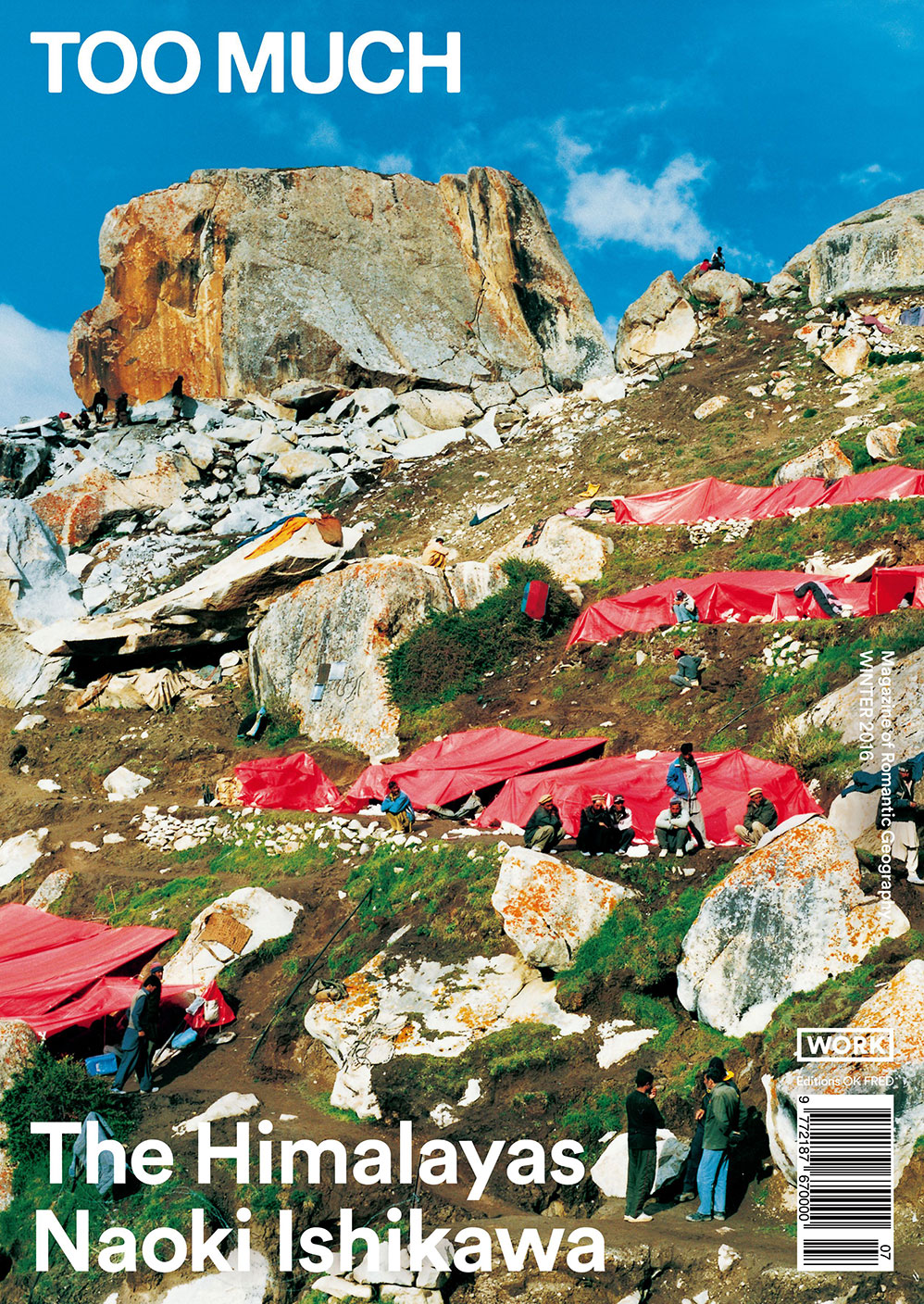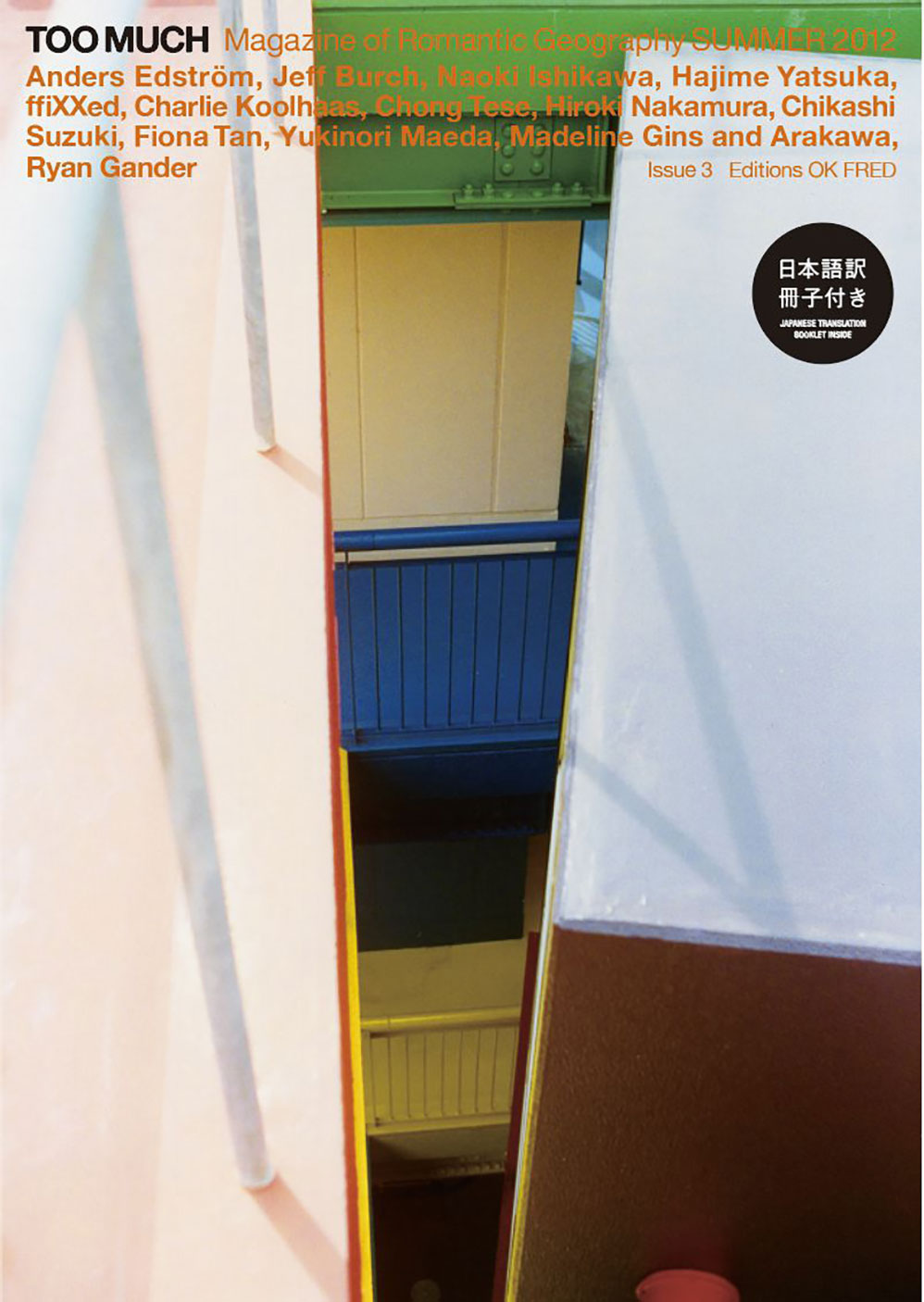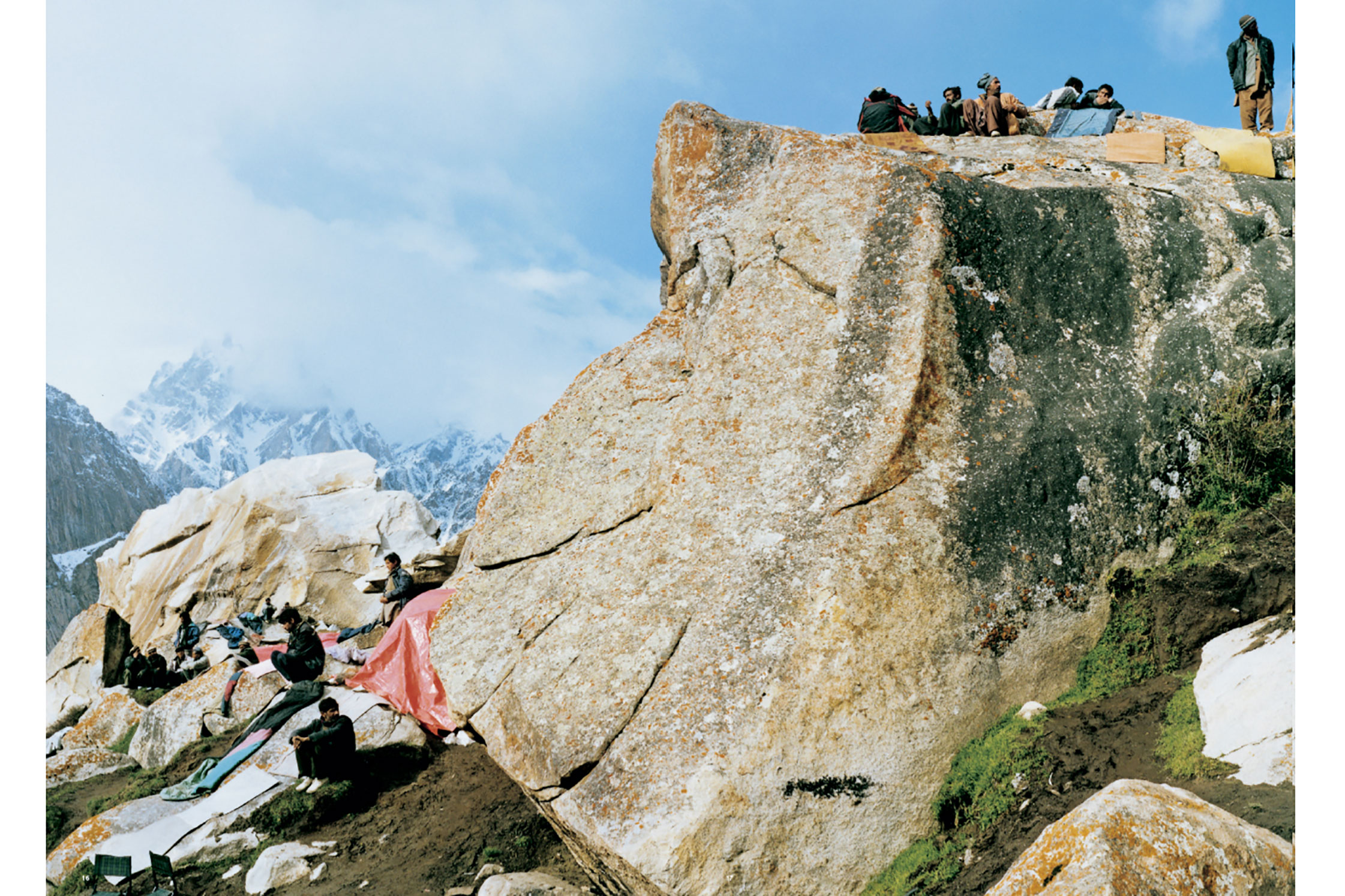Probing experiences of living in big cities through “paper, print, and ink,” Tokyo-based TOO MUCH is a magazine that searches for authentic stories which redefine our relationship to geography.
“Our real interest is not a specific field like architecture, art, or anthropology, but space and spaces,” says Yoshi Tsujimura, one of a global group of writers, researchers, artists, and photographers who design and produce TOO MUCH. Now on its eighth issue, this interdisciplinary approach plays out according to the notion of “romantic geography,” which Tsujimura defines as a way of looking at our cities not as built out of ideas alone but “by the experiences that people make of them.”
Each issue of the Tokyo-based magazine tackles a different theme—from “shelters” to “the body in space and time”—each is addressed in thoughtful, and often personal, essays by a host of experts on the chosen topic. This painstaking process is one of the reasons that the magazine is published on an annual basis. “The creation of our content is an organic process and finding the right person and working with them is a slow journey,” says Tsujimura. “We like to take our time with this to ensure the content is unique and interesting and we are fully satisfied.” The relationships forged through this process are a source of pride for Tsujimura and his fellow editors. It often leads to projects that go beyond the magazine itself, which happened in the case of the photographer and explorer Naoki Ishikawa who contributed to the first issue and recently had an archive of his climbs in the Himalayas published by TOO MUCH.




-
What was the motivation to publish TOO MUCH Magazine?
We are living in a world on the move, one that has become rapidly globalized and urbanized, and we wanted to explore and document this climate, these movements and changes, and our own experiences of living in such a big city through the lens of paper, ink, and printers.
-
Can you tell us a little bit about the phrase ‘romantic geography’ and how it manifests itself throughout the issues?
Our interest as editors was to find a way to talk about subjects such as architecture, urbanism, and the evolution of mega-cities while maintaining a tone and an approach that was human and poetic. TOO MUCH is a report on the experience of physical space; about people, cities, landscapes and structures. It is about how the man-made world remakes man and vice-versa. Through massive population and capital movements, cities are changing drastically, often competing against each other. There is no static view on what cities look like. Our aim as a magazine is to observe the changes that occur in our cities and report on them.
-
The magazine was founded in the same year as the Tōhoku earthquake hit Japan. Did this have an effect on the magazine’s founding?
Of course the Tōhoku earthquake had a significant impact on our magazine. Since it happened, we’ve been covering the issue through the work of philosophers such as Bruno Latour (we considered the exclusion zone in Fukushima: what will life and death look like in future ruined cities?), architects (Shigeru Ban, Toyo Ito, Jun Aoki), and artists whose work has been influenced by the aftermath of the earthquake. Many of them felt that things they had created and had believed in had no power when faced with the devastating events in Tohoku and Fukushima. For example, the artist Satoshi Murakami (featured in our Shelters issue), watched on TV as the tsunami washed houses away and has since travelled all over Japan with a styrofoam house on his back—that he built—aiming to find another possible concept of housing.
We are also thinking about ghosts and the spirits of the dead for our upcoming issue. Tōhoku traditionally has a rich and complex culture in regards to the dead, and it became more relevant to us after the quake. The dead can be more powerful for us than the living. We would like to go back and explore different ways of perceiving the space after death.


-
How do you develop topics to unpack within the magazine?
Every issue has a theme: Shelters, A Fake Mountain, and The Body in Space and Time, to name a few. It usually starts from a fairly broad idea that manifests through reading, seeing exhibitions, talks, performances, and observing the world around us. Often just one word may come to mind. Then we begin to explore this idea, pulling it apart, and eventually it becomes much more tangible, more defined. We start to look for this theme in the work of artists and architects, in literature, in science, in design—within as many fields as we can manage. We have a variety of different interests, and a theme allows us to engage with a wide range of disparate fields. As we compile the work of our contributors, this theme grows and changes. The outcome becomes something way beyond our initial preconceptions.
-
You are based in Tokyo. How does the city influence the topics you address in each issue?
Tokyo is a very dense city. It’s natural for us and those who live in the city to think about our relation to space. We have no choice but to think about space here. So the city shaped the creation of TOO MUCH. But for all of us, places are an intrinsic part of our lives—it doesn’t matter who we are, where we are—there is absolutely no moment in our lives when we are not in a relationship with a space. We are fortunate to live in Tokyo as we are frequented by an astounding array of talented artists, thinkers, leaders and other inspiring people. This opportunity drives a lot of the content in our magazine.
“Places are an intrinsic part of our lives—it doesn’t matter who we are, where we are—there is absolutely no moment in our lives when we are not in a relationship with a space.”
-
TOO MUCH is published in English but includes contributions from a mix of Japanese and non-Japanese creatives, some of which are published in translation. Did you always have an international audience in mind when founding the magazine?
TOO MUCH is a way for English readers to read translated Japanese texts and writing that is difficult, if not impossible, to access otherwise. English wasn’t our only option, but it was a tool for us to communicate on a large scale, and gain an international readership. But our goal wasn’t to promote Japanese culture in English, but rather to find a new way to talk—with an international voice and way of editing—about things happening on a Japanese scale. Japan is far from everything, both geographically and culturally. No one actually cares about ‘Japanese culture’ or ‘traditional culture’ in Japan. We’re trying to show a side of Japan that is little known in a way that helps readers outside of Japan to be interested in it. We’re trying to find the best way to do that, which is challenging as well as fun for us, and I think it makes our magazine unique.
-
What is the future of TOO MUCH? Will there be more issues? Do you have other projects in the works?
We are currently in the process of making our ninth issue. In this issue we will explore the sacred. We are seeking to enter subliminal spaces, to look at ritual and belief. We are asking ourselves questions such as: How do we connect to the immaterial from our earthbound places? Can we contain the divine? Why do we seek to?
With the ninth issue, we will also have a new addition to our projects called Kogoe—meaning whispers in Japanese—that will supplement TOO MUCH Magazine. Kogoe will focus directly on literature; featuring fiction, essays, and poetry from writers and thinkers globally. As the name suggests, if an idea is powerful, it can be told as a whisper and still be heard.
TOO MUCH is a magazine about romantic geography. Its purpose is to document our collective experience of cities, and look at the ways people and landscapes make and remake one another. Founded in 2011, TOO MUCH is produced and designed in Japan by a global group of writers, researchers, artists, and photographers.
Text: Chloe Stead and Sophie Rzepecky
Photography: John Murphy, Naoki Ishikawa

